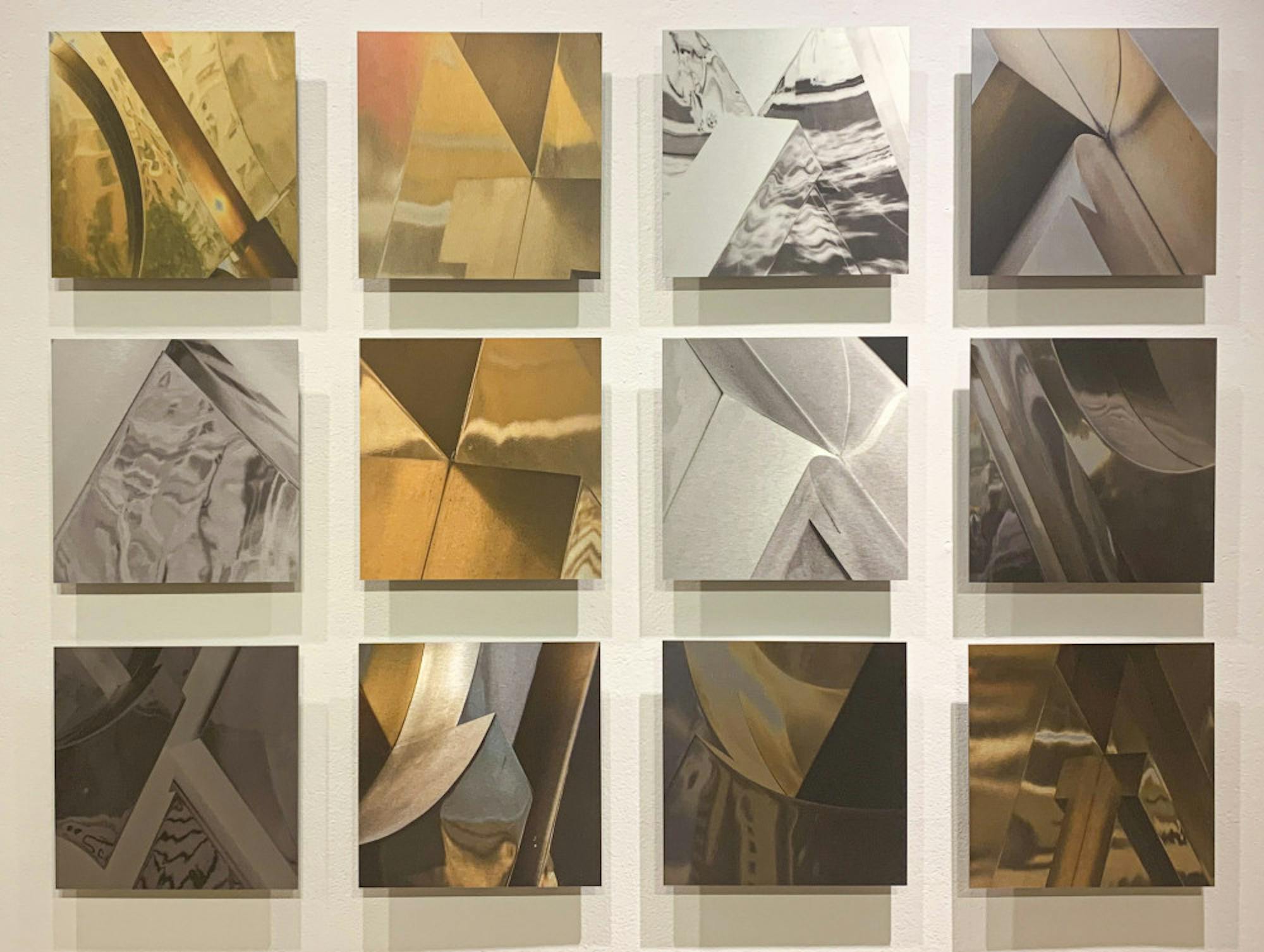When the image of verdant and tender burgeons fuses with a minimalistic composition of clean-cut metal edges, a clash of two objects that are almost on the opposite spectrum of characteristics, they compromise into an artwork with a sense of neutralization and mutual acceptance. It blurs reality, raises the awareness of coexistence and assigns abstraction with meaning.
The exhibition "The Woven Image," located at Tufts University Art Galleries in the Aidekman Arts Center, presents the recent graphic artwork by Tufts alumna Janice Lourie (J’57), who weaves together various types of media, disciplines and technologies. The exhibition is available from Sept. 8 to Dec. 18, 2020. A virtual tour on the Tufts University Art Galleries website is also an option for people who are in a different city or country.
At first glance, Lourie's artworks are geometric, abstract and slightly bewildering. Blocks and layers of colors, shapes and lines serve as the basic composition. The whole picture might look surreal and confusing, but Lourie's inspirations and sources for her multimedia graphic art are in fact based on simple day-to-day matters.
Her work "Out My Window," on display in the Aidekman Arts Center, is a digital print that showcases fragments of buildings in New York City. By photographing her neighborhood in Manhattan at close range and digitally processing those images together, Lourie creates a sense of abstraction by distorting our established impression on buildings. It is true that when you are submerged in an environment for a long time, you gradually lose the spark of curiosity and appreciation that you once had. Lourie's reconstruction through fusion thus ignites a new perspective to view her old surroundings.
What's special about this exhibition is that it also celebrates the 50th anniversary of Lourie's groundbreaking software development that secured IBM's first software patent for an automated, computer-driven loom. Indeed, Lourie’s fields of expertise in computer science, music, weavingand graphic art reflect her approach of fusion not only in her artworks. As a weaver during her childhood and a pioneering computer scientist at IBM, Lourie developed a revolutionary software system that could help textile designers to visualize their intended pattern instantly. With the new system, designers could preview their designs electronically and select their desired pattern and weave structure. Then, the system would send the data to a loom or other automated weaving device. Compared to the traditional manual method of weaving it bit by bit without knowing whether the ongoing weave pattern would support a design, Lourie's invention freed up designers' time and creativity.
“You could say everything I’ve done is connected by the idea of fusion,” Lourie explains in the exhibit. Her innovative spirit allows her to create things that are influential and powerful by aggregating and utilizing the distinctive characteristics of different fields. Fusion means breaking the normality and creating something that embodies an unprecedented implication.
Through Lourie’s fusion of artwork and the software industry, she opens up new possibilities and eliminates matters of obsolescence, which always kindles a sense of wonder among us, the audience: What could be next?






